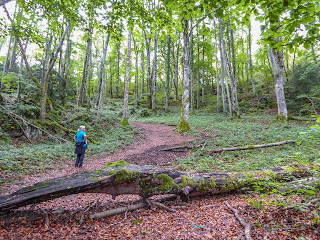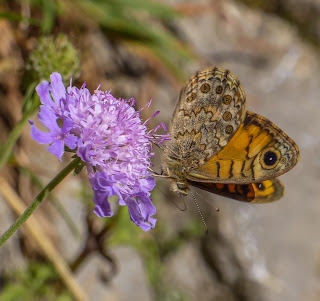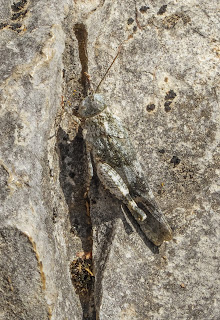The monument was erected to commemorate the slaughter of sixteen members of fhe local resistance. They were ambushed at this place in the woods by a patrol of German and German supporting French, in July 1945. Just six weeks before the war ended. You might think that there is no more to it, that's the end of the story. But look closely at the names on the memorial and you will see that the forth name from the bottom has been covered up. Likewise at the top, a new piece of stone has been added so that the number of dead could be changed. I'm fascinated to know why the number has been revised down by one and one of the original names removed. Was it found out later that one of them was a colaborator? I would love to know the story behind that and what effect it had on the village. Whatever the reason, I wouldn't mind betting that it caused divisions that still echo through to the present day.
From the memorial in the wood the path continued along lanes through more open farmland. The direction changed and we headed back, uphill and now in the general direction of the chateau. The lanes hereabouts were lined with plum trees which we just had to try. They were delicious!
Up through the woods, quite open at this point with beech and hazel being the main species. Higher up and box wood became predominent, which can be very clostrophobic and difficult to negociate.
Onto the top of the escarpment looking down onto the village of Roquefixade.
A little further along and we got our first view of the chateau since leaving the village, plus a wonderful view of the whole valley and the mountains beyond.
At this point we were looking for a way down. We did find one, but we weren't convinced it was the right one. It felt more like a cattle trod, narrow, steep and muddy. However, it was a wonderful walk of great variety and as we passed underneath the cliffs of the chateau, we joined a trac
k that led us back to the village square.


















































